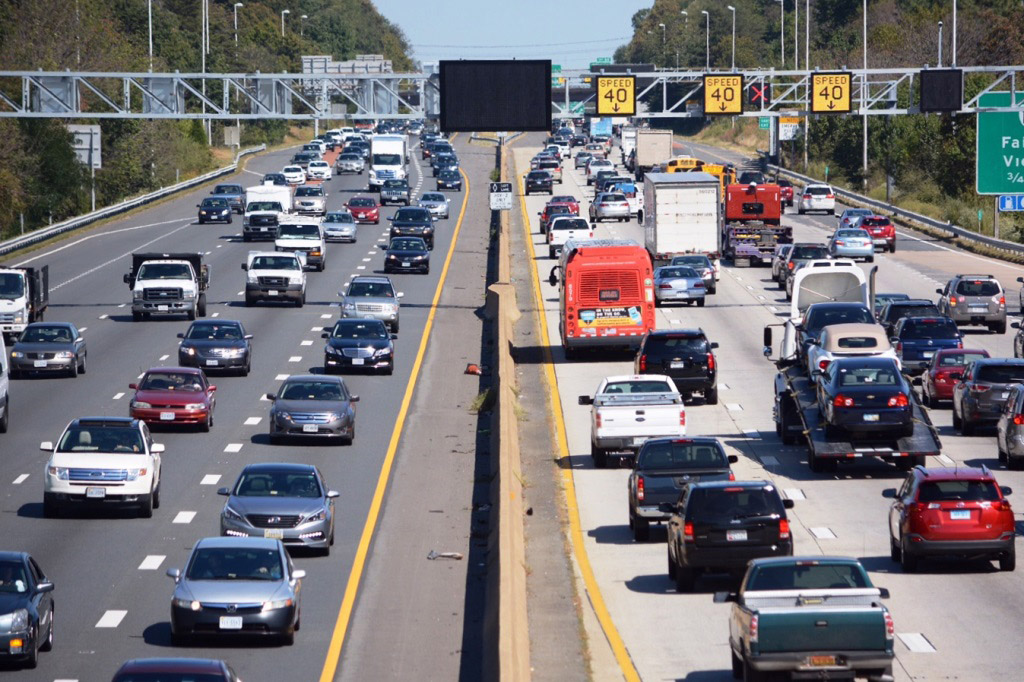WASHINGTON — The two-year-old high-tech system that allows the Interstate 66 “red X” lanes to be opened outside of rush hour will be taken down within the next 12 months, WTOP has learned.
The active traffic management system, which includes digital signs over each lane on a stretch of about 12 miles of I-66 just outside the Capital Beltway, cost $39 million. Work began in 2013; the system was first activated in September 2015.
Construction on two HOV or toll lanes in each direction between the Beltway and Gainesville is set to ramp up this spring, and that will disrupt the system.
VDOT plans to turn the system off within the next year, Megaprojects Director Susan Shaw said.
“We do anticipate that will occur in the next six to 12 months, and prior to that we will want to get some word out about how that’s going to happen and how that will work in the corridor,” she said.
During four years of construction of the toll lanes, which will be free for cars with three or more people and an E-ZPass Flex, the private companies building and running the lane are required to keep lanes open in the peak direction during rush hour.
When the project is completed, permanent shoulders will replace the “red X” lanes that are opened to traffic in the peak direction during rush hour. Since the active traffic management system launched, the lanes are also often opened at other times when traffic builds.
“We’re working through how best to transition away from that,” Shaw said.
“We will impact the foundations and the signs and structures fairly early in the construction process, and so it’s dealing with how do we manage that and how do we still keep traffic moving,” she explained.
VDOT installed the traffic management system knowing that it could be torn out in just a few years, since project planning was well underway when Interstate 66 toll lane plans more seriously moved forward.
“We already had a contractor who was underway; much of the equipment had been purchased although it wasn’t in place, and so we made a conscious decision to move forward with that, not fully knowing the timing of … the larger outside-the-Beltway project, and recognizing that we were in a very constrained corridor that had a lot of congestion,” Shaw said.
Most of the equipment is specific to the I-66 corridor and can’t be shifted to another highway or portion of I-66.
“We felt like even with a short-term use of that, there was still a very large public benefit to continue with that project,” Shaw said.







